The all-new Moto Guzzi V100 Mandello marks a huge step forward for the Italian marque that recently celebrated 100 years of production. Water-cooling, semi-active suspension, and lean-sensitive are all new to Guzzi, while adaptive aerodynamic wings are a world first.
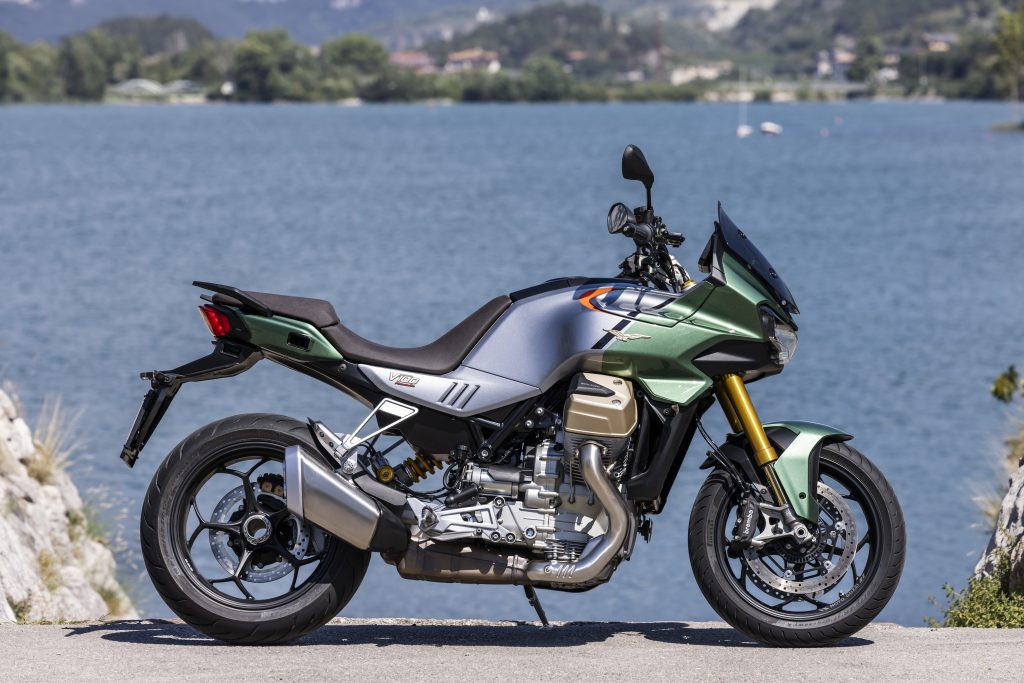
Story: Adam ‘Chad’ Child
Photography: Milagro
On the back of their centenary celebrations, Moto Guzzi have launched the completely new V100 Mandello which, the Italian manufacturer hopes, will propel its historic brand into the next 100 years.
It is hard to overstate the importance of the V100 to Guzzi. Yes, it is powered by a 90° transverse V-twin not entirely unlike the hundreds we have seen before, but the technology and long-term thinking invested in the bike make a huge statement about Guzzi’s future ambitions.

The new V100 features—for the first time on a Guzzi—lean-sensitive rider aids, an up-and-down quickshifter, and, on the S model tested here, Öhlin’s Smart EC 2.0 semi-active suspension. The bike also showcases technology unseen on any production bike in the form of adaptive aerodynamic winglets, which deflect up air away from the rider and operate automatically depending on the riding mode and speed. For Guzzi followers, though, perhaps the biggest news will be that the distinctive engine and frame are completely new. The unique 1,042-cc V-twin finally gets water-cooling while a steel tube frame uses the engine as a load-bearing component with the swing-arm pivot mounted on the gearbox housing.
Finally, the design department has produced a bike that looks even better in the metal than it does in the pictures and incorporates a raft of new features, including a full-colour five-inch TFT dash and a
subframe designed to accommodate panniers without the need for extra mounting brackets. An electric screen and integrated LED cornering lights are standard. Guzzi say the V100 Mandello creates a new class between roadster and traditional tourer. Well, wherever it sits, we took the delectable new Guzzi for a ride from their historic headquarters on the bank of Lake Como in northern Italy.
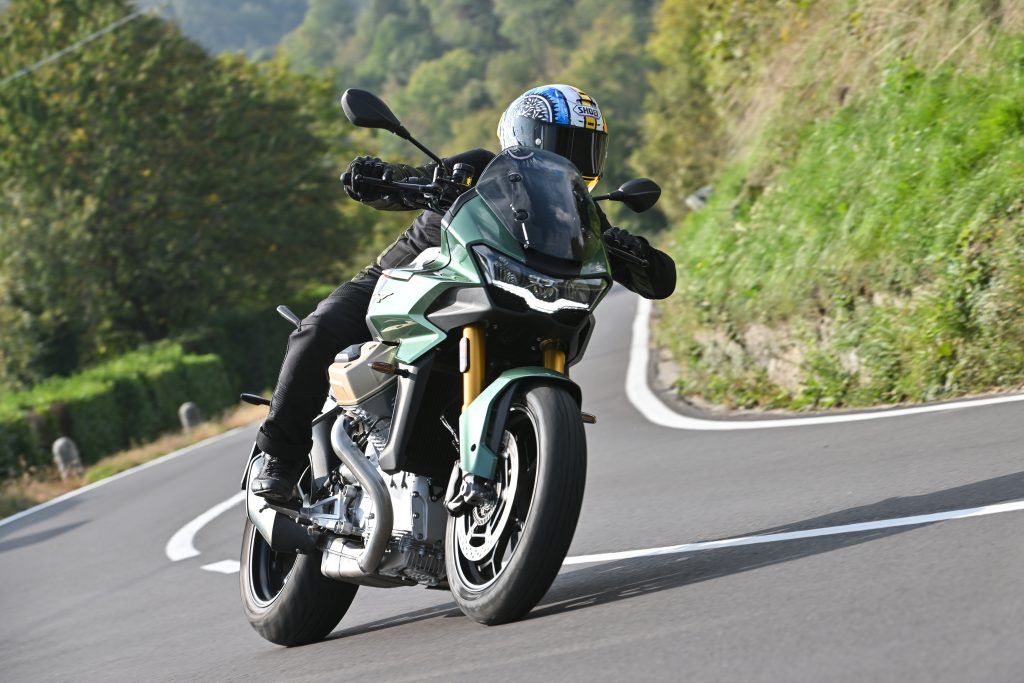
Guzzi wanted to modernize while keeping with tradition, specifically that transversely mounted V-twin and shaft drive which for decades have showcased and proudly defined the Guzzi brand. But to do so they needed more power, more room for the rider’s knees, fly-by-wire fuelling, better rider aids…
The result is this: a 1,042-cc 90-degree transverse V-twin that is now liquid-cooled with double overhead camshafts and four valves per cylinder. The engine has been kept as compact and light as possible and is 103 millimetres shorter than the V85 TT motor.
A clever but simple idea was to rotate the cylinder heads 90 degrees. This now means the exhaust exits more naturally from the side, not the front, and the intake system sits between the Vs, rather than protruding into much-needed leg space. Guzzi quote peak outputs of 105 Nm of torque at 6,750 rpm and 115 hp at 8,700 rpm. Significantly, 82 per cent of that torque is available at just 3,500 rpm.
I have ridden Guzzis for around 25 years, but this is very different. With a press of the starter button the Italian twin comes alive in the grand tradition, but the characteristic torque-reactive “rock” of the V-twin has all but disappeared. To add to the unusualness, those aero wings start to extend outwards (I am in Rain mode, which automatically activates the wings).
A few blips of the fly-by-wire throttle result in fewer than usual vibrations and there is a more modern rasp to the new exhaust. Into first gear, then second with no clutch required thanks the new and smooth quickshifter.
I can see the familiar protruding cylinder-heads on either side of the wings and the handlebar clamp is stamped “V100 Mandello Moto Guzzi 1921”, but it does not feel like a Guzzi. To add to this sense of modernity, there are four riding modes to choose from—Tour, Rain, Road, and Sport—which have three different engine maps. Tour and Road have a progressive feel, Sport is more dynamic and Rain is soft. The modes also change four levels of lean-sensitive traction control and two levels of engine braking, when the wind deflectors open and, because we are riding the S model with Öhlins Smart EC 2.0 suspension, the suspension settings. While Rain and Tour are set up for comfort, Road and Sport are for dynamic riding.
The switchgear and dash are Aprilia-developed (parent company Piaggio owns both marques) and are typically easy to use. Modes can be changed on the move and managing the electronic options on offer quickly becomes second nature. Those winglets automatically get deployed in Rain mode and, for once, I wanted a downpour on a road test to see if they really do deflect bad weather, but, frustratingly, the day stayed dry. Flicking from the soft-throttle Rain mode to Touring mode (wings now retract at low speed), and the fuelling is sharper. That said, throttle response is still only as aggressive as a sleepy Koala bear.
There is, however, a progressive feel to the fly-by-wire throttle and this is where I spent most of the ride. Around town and along the winding shore road on Lake Como, I found the fuelling to be near perfect in both Touring and Road modes.
The Mandello is so laid-back that I am unsure of its red-line’s whereabouts, as I never got anywhere near it. Use the V-twin’s well of torque—82 per cent of its grunt is available at 3,500 rpm—and it is blissfully chilled running up and down the tacho between 3,500 rpm and 6,500 rpm. It carved up mountain passes and drove hard out of countless hairpins with only the occasional need for a tap on the super-slick quickshifter, itself a vast improvement on Guzzi shifts of old.
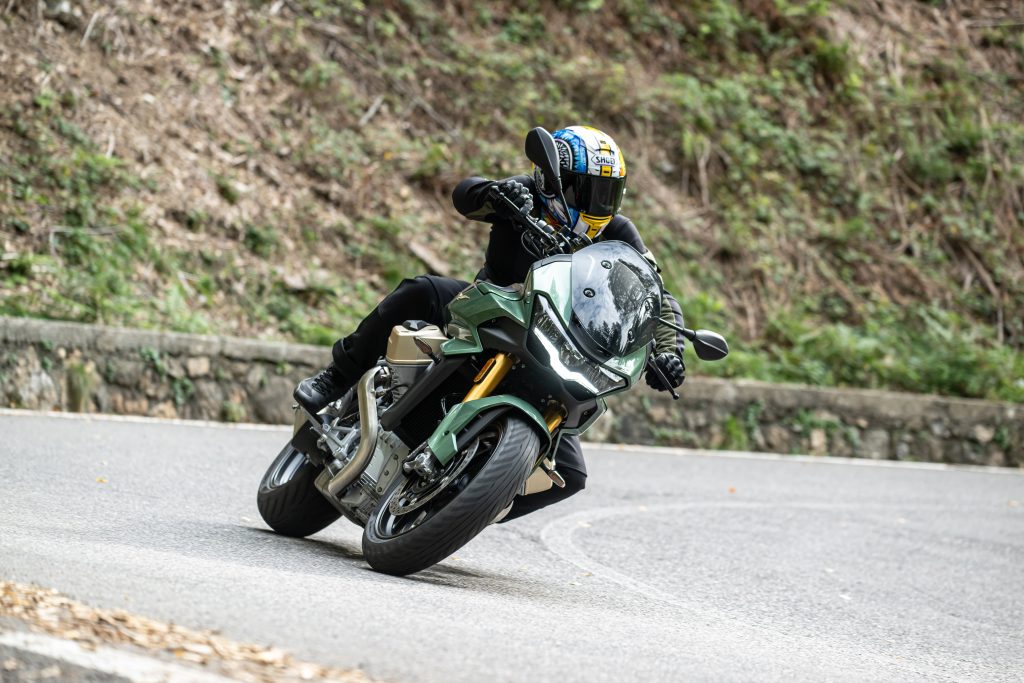
There is, however, significant zip in the throttle delivery when you opt for Sport mode. The throttle feels more direct and, on faster roads, this may be the preferred option. It is not aggressive or intimidating—after all, Guzzi’s claimed 115 hp probably amounts to just 100 hp at the rear wheel—but I much preferred the softer feeling of power and feel in Touring on Italian back roads.
In fact, without any motorways or fast stretches on our test route, I cannot categorically say if 115 hp will be enough for some. The Mandello is far from lethargic—with the TC switched off, a whiff of clutch will lift the front wheel with relative ease—but might feel slightly under-clubbed on the autobahn when fully loaded with a pillion rider and panniers. Only a full test will tell.
Guzzi have used expertise and experience from Aprilia and adopted the Öhlins Smart EC 2.0 semi-active suspension system used by its Piaggio stablemate, albeit with different settings and parameters to compensate for the Guzzi’s weight, power, and purpose.

Essentially, there are two “active” suspension modes: “Comfort” for Rain and Touring riding modes and “Dynamic” for Sport and Road. The Öhlins suspension changes its compression and rebound damping rates automatically for a comfortable ride or a dynamic and sporty one. Spring pre-load does not change on the move but can be adjusted easily to compensate for a pillion or luggage with a remote pre-load adjuster.
There are also two manual suspension modes in which the suspension performs more like conventional system. Furthermore, you can personalise both the active and manual modes with your own preferences. You do not have to be a suspension expert as the system simply asks if you want more or less braking support or more support during acceleration. And this is all done via the clear and easily navigable switchgear and dash.
I only tested the semi-active modes and settled for the Comfort setting, which adapted beautifully to the roads and conditions on our test route. In the hills around Como, even when the speed increased a little, the suspension carried the Mandello’s 214 kilograms plus me with controlled ease. The front forks are progressive under hard braking, while the rear end does not significantly squat under power. Mid-corner, the Guzzi holds its line and ground clearance simply was not an issue at touring pace. Best of all, the ride quality is plush, no matter how potholed or cobbled the road surface. Switch to Dynamic suspension mode, in Sport and Road and there is a noticeable tightening of the suspension, with less travel and a less luxurious ride but noticeably more support. You can certainly ride more aggressively on undulating roads, but on test in Italy, with all Lake Como’s stunning views to drink in, Comfort was my preferred option.
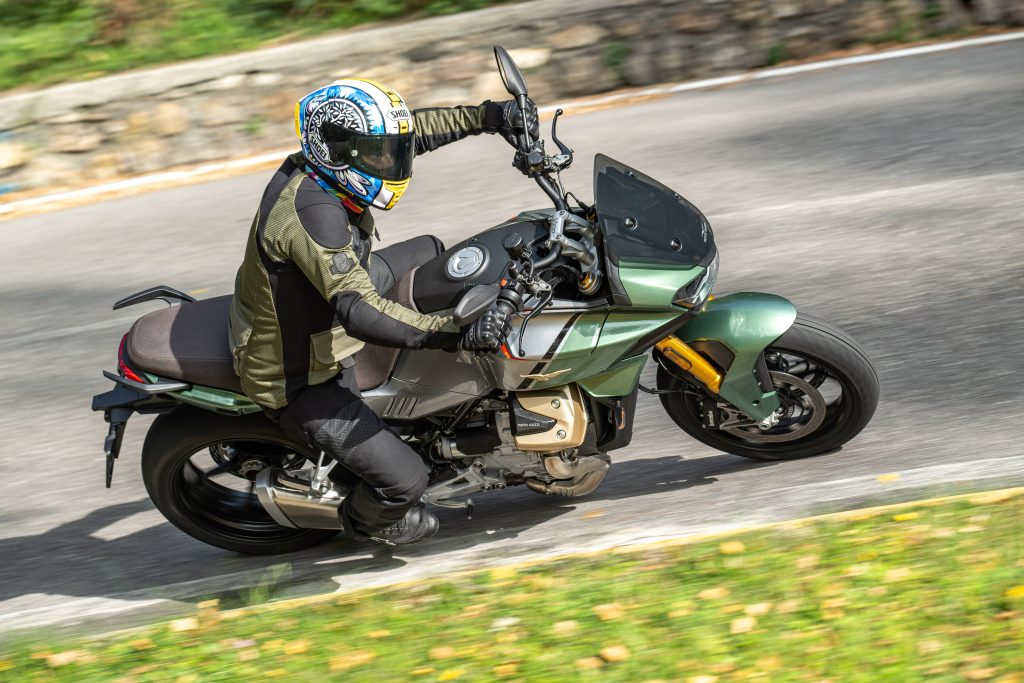
For the first time, Guzzi have implemented lean-sensitive ABS, a system developed in partnership with Continental. While engine braking changes with the riding mode selected, ABS is not mode-dependent.
As you would expect of Guzzi, Brembo M4 calipers are used front and rear and well up for the challenge of hauling up 233 kg of V-twin and should be able to take on more once you add a pillion and luggage. The Brembo master cylinder and lever have a span adjuster for small hands like mine and the actuation is smooth at low speeds.
The V100 Mandello is the first bike to use adaptive aero wings designed to deflect the wind away from the rider. The wings extend automatically in Rain mode and, at 70 km/h in Touring and Road mode, are nonactive in Sport. You can personalise these settings, opting for the wings to get deployed at as low as 30 km/h or as high as 95 km/h, even in Sports mode. They automatically close at 20 km/h.
Are they a bit gimmicky? Originally, I suspected so, but you can feel when the wings are open or closed. If you select Tour mode while riding at speed in Sport, the wings open and you can feel a difference. I am unsure how much difference—Guzzi claim 22 per cent—and I assume this will depend on your road speed, body size and shape, and wind direction, etc. But it is not all about the wings. An electrically adjustable screen is standard, along with heated grips, cruise control, and that informative full-colour five-inch dash with Bluetooth connectivity. The semi-active suspension can be set up for comfort, the seat is wide and comfortable, and it appears pillions have been accounted for, with a large seat and grab handles.
We did not get an opportunity to lay down some serious high-speed miles on the new V100, but first impressions are positive. Guzzi quote 21.27 km/l, which should be good for 250-320 km before a petrol stop becomes necessary. A few hours in such a comfortable riding position should not be a problem. Thanks to the re-configured cylinder-heads, there is more leg-room for taller riders as the inlet furniture no longer impedes leg-room. The engine is a fraction further forward, too, again increasing the room for tall riders. There is a lower seat option for short riders (like myself) but the Guzzi looks a lot larger in pictures than it really is. I am only 5’ 7” and had no issue getting two feet down securely.
Moto Guzzi have pulled out all the stops and, for the first time in their long history, installed a six-axis IMU on one of their V-twins. This allows cornering ABS and four levels of lean-sensitive traction control which can be switched off should you wish to. As mentioned, Öhlins semi-active suspension is a first for Guzzi.
Guzzi have also fitted as standard those adaptive wings, four riding modes, cruise control, an electric screen, a USB socket (under the seat), cornering lights on the S model, an up-and-down quickshifter, a tyre pressure monitor, heated grips, and Moto Guzzi MIA (phone connectivity).
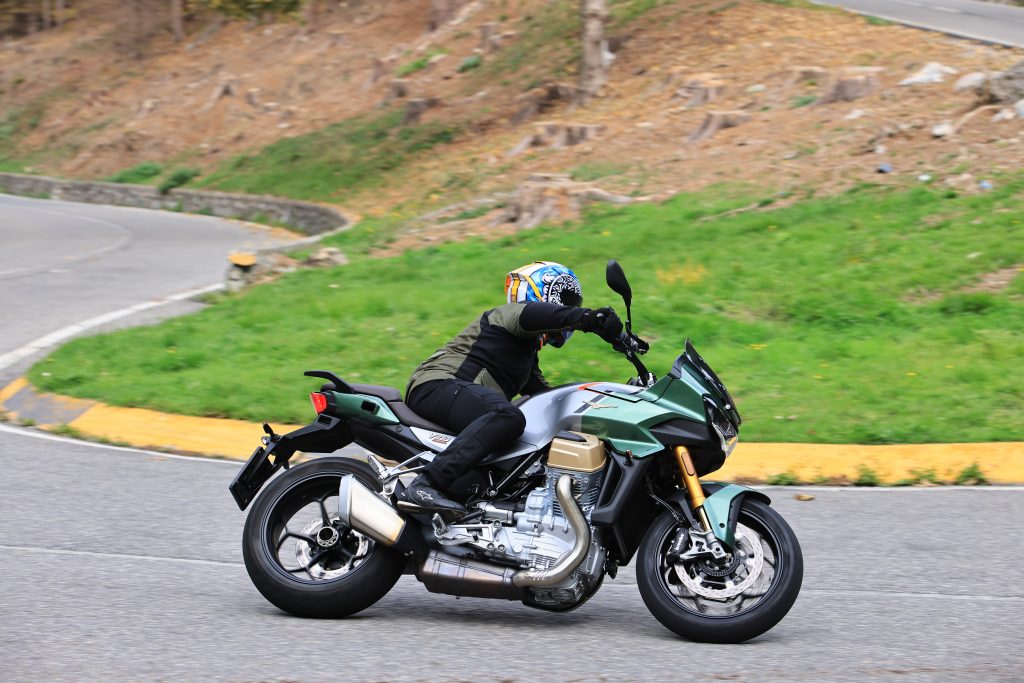
There is no centre stand as standard (that is an extra) while optional hard riding cases fit without extra brackets and are 30 litres and 29 litres in capacity, large enough for a full-face helmet. A top box, luggage rack, larger screen, heated seat, comfort seat, and auxiliary lights are all waiting in the wings and ready to turn the Guzzi into an all-year big-miles tourer. When we road-test a new bike, the updated or new model is typically a little faster or a few kilos lighter, with revised suspension settings and new colours, but this is a huge step for Moto Guzzi. Not only have they installed adaptive aero wings, a first for any production bike, but have also added lean-sensitive rider aids and semi-active suspension for the first time in Guzzi history.
And let us not overlook the completely new water-cooled V-twin, new frame, and the innovative way they have increased leg-room by simply turning the cylinder-heads through 90 degrees. Despite all that modernization and despite adopting electronic technology from Piaggio stablemate Aprilia, Guzzi have managed to stay true to their values and heritage. The V100 is desirable, attractive, and unique. Remove the badges and it is still obviously a Guzzi.
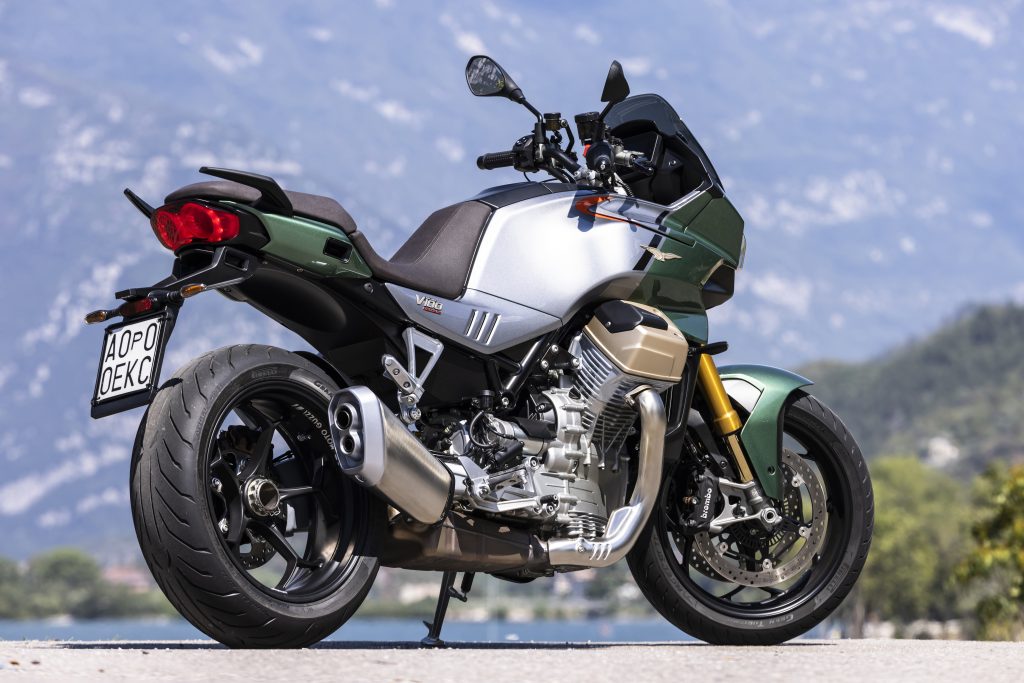
Like many, I have always had a soft spot for Guzzi and I am happy they are finally on a par with and, in some cases, ahead of the competition. You no longer have to go back in time to own a Guzzi.
For some dedicated Guzzi fans, the new V100 may lack a little of the character of the air-cooled bikes and, compared to some of the Japanese sports touring competition, it is down on power. We did not have the opportunity to really put some big miles on the V100 during this test but, as first impressions go, the Mandello was extremely impressive—good enough, I suspect, to launch Moto Guzzi into the next century of production.
Also Read: Norton Commando 961 – Reborn Anti-bland

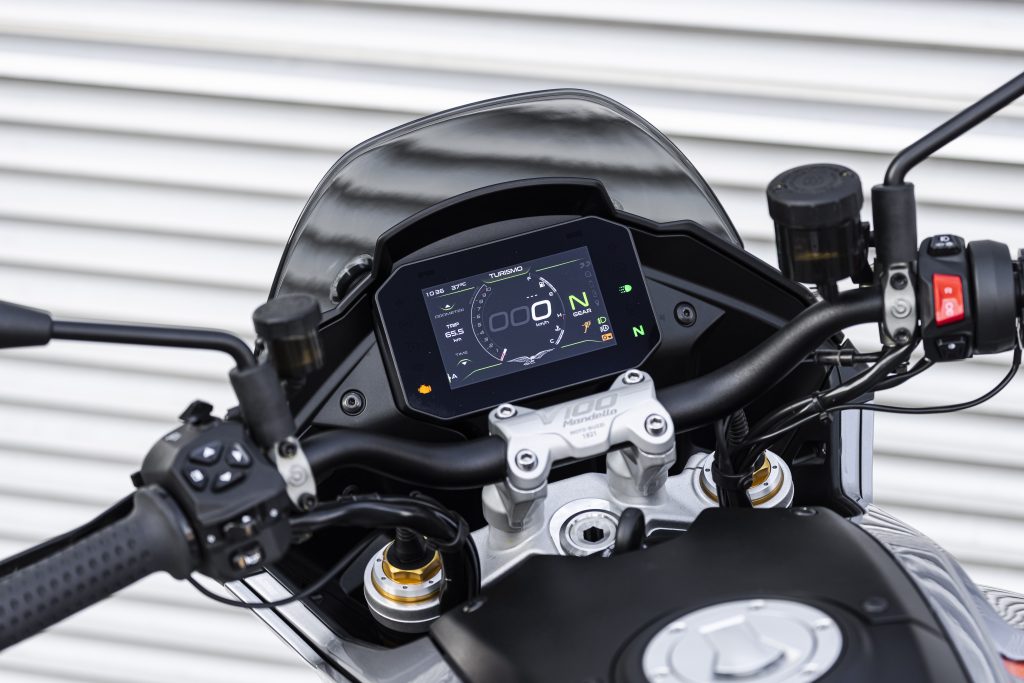


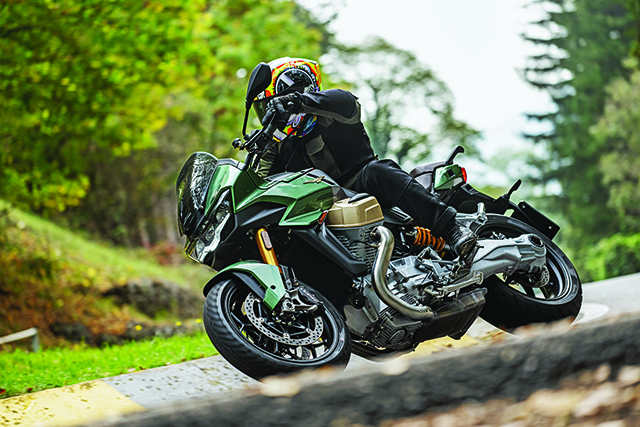
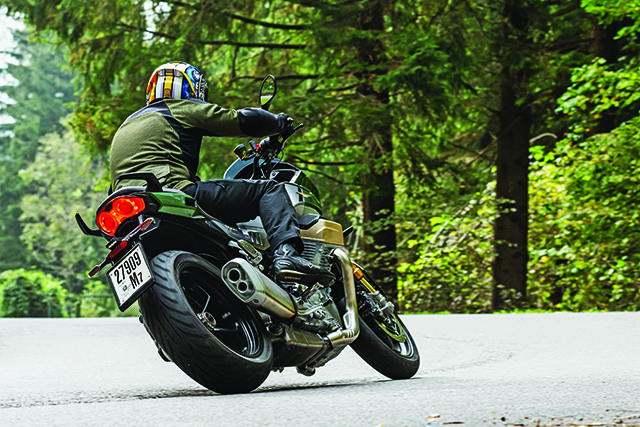

Leave a Reply